Why and where to buy in north-west Spain
The north-western corner of Spain hasn’t been entirely serious about selling itself – with names like the Costa da Morte (Coast of Death) or Green Coast putting the sun-worshippers off. Yet this area, which includes Galicia and Asturias, is easy to reach all year and offers a wonderful alternative to the Mediterranean coasts.
It’s been compared to Brittany, or Ireland’s west coast, but warmer and with fewer British people! It boasts an exciting seaside, the best seafood in Spain and lush green countryside. It includes heritage in Santiago de Compostella, the heights of the Picos de Europa mountains, Spain’s most exciting wildlife and the best surfing in Spain. Four regions make up the North West: Galicia, Asturias, Cantabria and Castile y León. We think they’re well worth checking out.
But firstly, just how bad is the weather in Spain’s Costa Verde (“Green coast”)?
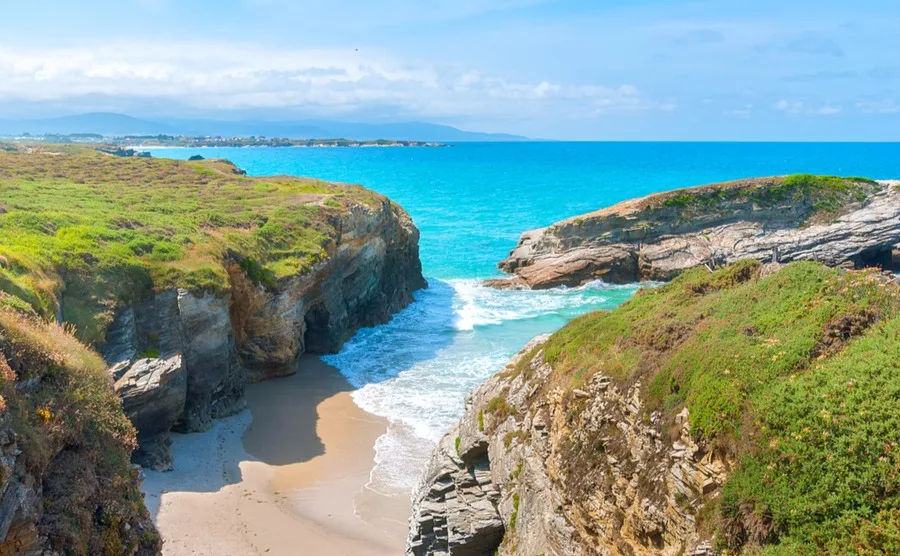
Beach of the Cathedrals (Playa de las Catedrales) in Ribadeo, Galicia.
The weather in North-West Spain
It’s not so bad! Average annual sunshine in north-west Spain varies from around 1,700 to 2,200 per year. Indeed it brightens up the further west you go, with over 2,000 in Vigo and Pontevedra compared to 1,650 in Santander. Compared that with 1,750 in Cornwall and under 1,300 in Western Ireland.
It does rain a bit, but again the averages won’t frighten anyone from the British Isles. The far west, around Vigo and Santiago de Compostella get around 1,900 millimetres annually, which is around 50% more than the wetter parts of the UK, but the northern coast around Oviedo gets just half that amount. Also on the plus side, the majority of this rainfall is in the winter from November to March. Leaving you to enjoy the beach rain-free in the summer.
While the central areas are dryer in winter, they are also colder, especially in a city such as Lugo which is at 450 metres. In general you will avoid frost and snow in the coast, while enjoying it in the interior and highlands. Enjoy? Yes! There are ski resorts between León and Oviedo, at Pajares and San Isidro.

There’s great skiing in León Province
Property Prices in North-West Spain
Just under 4% of property sales were to overseas buyers in Galicia in 2019, 5% in Cantabria and 6% in Asturias. Compare that to 27% in Murcia! But alothough international buyers are relatively few and far between in all three provinces, those that bought since 2014 have enjoyed a steady rise in the value of their homes.
Although the data from Idealista says that north-west Spain is seeing slower price rises than elsewhere in Spain, this does also suggest strong growth potential. While the Balearics and Madrid, for example, are at record highs, the North West is still a good 25% below (as of July 2019)
| location | Price per metre2 (June 2019) | Rise in past year | Historical maximum |
| Galicia | €1,364 | -2.5% | €1,762 (2011) |
| Cantabria | €1,470 | -0.5% | €1,988 (2011) |
| Asturias | €1,356 | -0.1% | €1,847 (2011) |
| Castilla y Leon | €1,155 | +0.2% | €1,468 (2011) |
| Spain as a whole | €1,733 | +6 | €2,053 (2007) |
See all your options for affording a property in North-West Spain. Read How to Pay for a Spanish Home.
Galicia
On the furthest north western tip of Spain, Galicia is a land of history and legends. Its southern border is with Portugal, while to the east are Castile and León and Asturias. To the west and north is the Atlantic Ocean, which has shaped the 1,660km of coastline, not just physically, but everything from its psychology to its cuisine.
Galicia is often compared to Ireland because of its soft green landscape and above average rainfall. There are four provinces in Galicia: A Coruña, Lugo, Ourense and Pontevedra. Its capital city, Santiago de Compostela, is known to most people as the destination for thousands of pilgrims who walk the Camino de Santiago – “The Way of Saint James”. Although originally based on religion, plenty do the 700km walk for their own spiritual and physical health.
The city has world heritage status and is large by north-west Spanish standards, with more than 100,000 inhabitants. It is a beautiful city, dominated by its cathedral which dates back to the 9th Century. Other major cities are Lugo and Ourense, which are in Galicia’s mountains; a large part of the region is mountainous and verdant.
People are attracted to this region’s simple way of Spanish life, a world apart from the hectic Costas of the south.
Inexpensive living
Galicia is one of the cheapest places to live in Spain, especially in the hinterland, away from the coast. It is also still unspoiled, with a very authentically Spanish way of life, and boasts wonderful seafood. Fishing is still a major industry. The southern coast is the most built up and is the area where the majority of tourists go.
Because of its location, the Romans thought that Cape Finisterre was the end of the world (finis terre, or “land’s end”), and the name Galicia refers to a Celtic tribe that lived north of the River Douro and was called Callaecia, later named Gallaecia by the conquering Romans.
Quintessentially Spanish
People from all over the world are attracted to this region because it offers a simple but wonderful way of Spanish life, a world apart from the Spanish Costas of the south. The climate results in a lush green landscape with pine forests and eucalyptus trees. The local language is Galego and it is widely spoken. Of course, Galicians also speak Spanish but they are proud of their history and culture which has strong Celtic roots. The region is famous for its shellfish and rightly so, with probably the best known of its local dishes being pulpo a la gallega, a kind of octopus stew which is absolutely delicious.
Until quite recently, mountain roads were rather difficult to negotiate, but the opening of two motorways, the A52 and A6, have reduced travelling time significantly. There are two airports in Galicia; the main one is at Santiago de Compostela.
You can also reach Galicia by train from Madrid, or travel to the French border at Hendaye and catch local services across northern Spain.
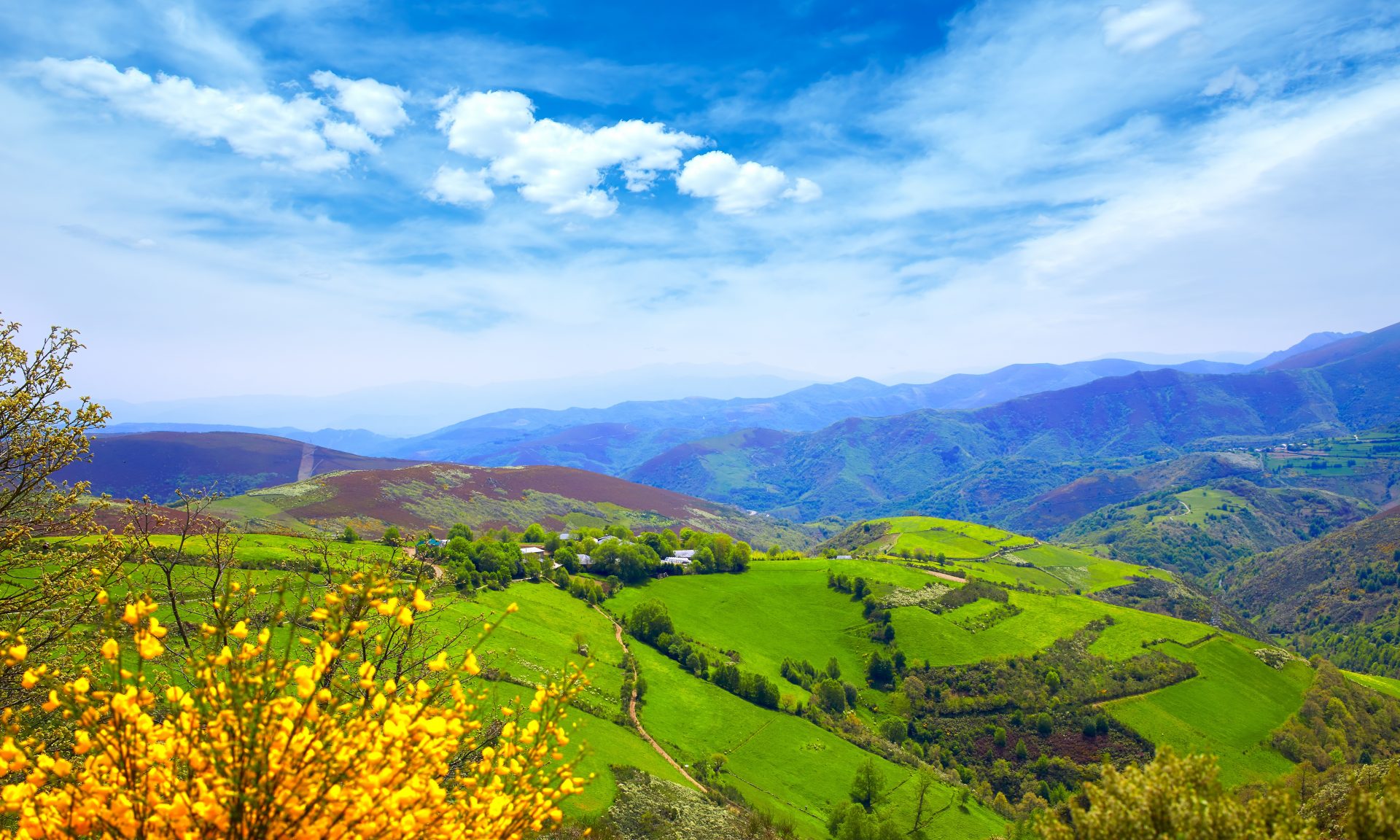
It’s easy to see why the region is often compared to Ireland.
Unspoiled and peaceful
The region doesn’t cater for expats in the same way as the Costa del Sol or the Costa Blanca. There are comparatively few British living there and those who do live in fear of what they perceive to be an invasion by other Brits who may spoil their peaceful existence. However, tourism on the south west coast has brought more overseas visitors, and the tourist sector is growing quickly. There are more estate agencies in the area now, and some of the agents are fluent in English, but don’t expect them all to speak your language. Property prices are among the lowest in Spain, though you will pay more by the coast than inland.
Getting there
There are three small international airports in Galicia itself: A Coruña Airport in the northwest of the region, mainly with connections to the rest of Spain and Portugal – although there is a regular Vueling flight from London Heathrow; Santiago de Compostela, the second busiest airport in northern Spain, which is served from several cities in the UK by easyJet, Ryanair and Vueling; the smaller airport of Vigo connects the region to the rest of Europe, including the UK by Iberia Airlines.
There are daily services to the region from Madrid, which therefore connects Galicia to the rest of Europe, and further afield.
A holiday home in North-West Spain offers fun for the whole extended family as well as your friends. So why not pool your resources and buy together? Read how, in our guide, Buying Abroad with Family.
Cantabria
Another relatively small region, Cantabria is known for its lush vegetation and renowned archaeological sites. The Gulf Stream gives the region a temperate and oceanic climate with warm summers and mild winters. Vegetation here is characterised by forests of leafy trees and grasslands – and there are several natural parks here that are popular with locals and expats alike. The most important of these is the Picos de Europa National Park, which also affects Castile y León and Asturias.
As a fairly small region, wherever expats live they can reach elsewhere in Cantabria with relative ease. There are options to live in town, in Torrelavega, as well as further out into the country in the Renedo de Piélagos area, or Cabezon de la Sal.
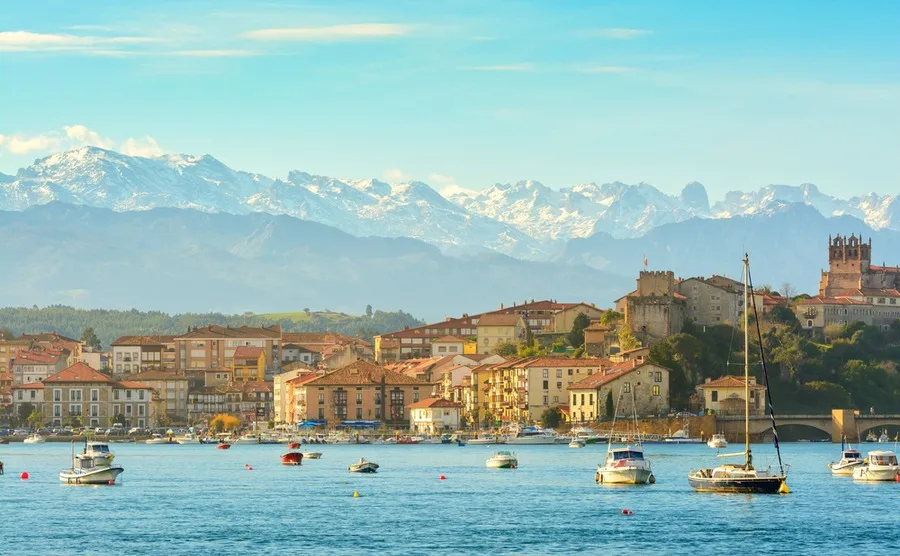
Mountains meets seaside at San Vicente de la Barquera, Cantabria
The region’s history is long and varied, and there are numerous monuments, museums and architecture of note found here. These include the caves at Altamira, El Soplao, Del Valle and Las Pasiega and the religious architecture of Santo Toribio de Liévana Monastery, Santa Maria de Piasca and San Román del Moroso. You can enjoy the Cantabrian Sea Maritime Museum, the Altamira National Museum and Investigation Centre and many more.
Cantabrians like to have fun too. There are numerous markets and fairs celebrated across the region and throughout the year, including La Vijanera (winter carnival), celebrated on the first Sunday of the year. La Folía in April in San Vicente de la Barquera, is a parade of local fishing boats. In summer, the SAUGA folk music festival is in August.
Limited ingredients create a brilliant cuisine
The cuisine of Cantabria is renowned for its select list of ingredients creating a raft of different kinds of meals. Seafood is widely used (especially clams, mussels, sea bass, hake and tuna), alongside veal, game and pork. Pastries are also a calling card of the region’s gastronomy. Puff pastry is called different names across the region, but is widely used to make the dishes of each area.
Getting there
The international airport for this region is Seve Ballesteros-Santander Airport. Ryanair flies here from Edinburgh and London-Stansted from the UK, as well as connecting the region to wider Spain and Europe itself.
You can sail to Santander by ferry from Plymouth in the UK and from Cork in Ireland, via Brittany Ferries.
Castile y León
The largest region, not only in Spain but in the entire European Union, Castile y León is formed of the two previous regions of Castila la Vieja and León, which were united in 1983. Both regions had been central to the medieval history of Spain – and this can still be seen in the exceptionally well-preserved cathedrals, monasteries and castles. Castile y León has six UNESCO World Heritage sites – more than any other region of the world.
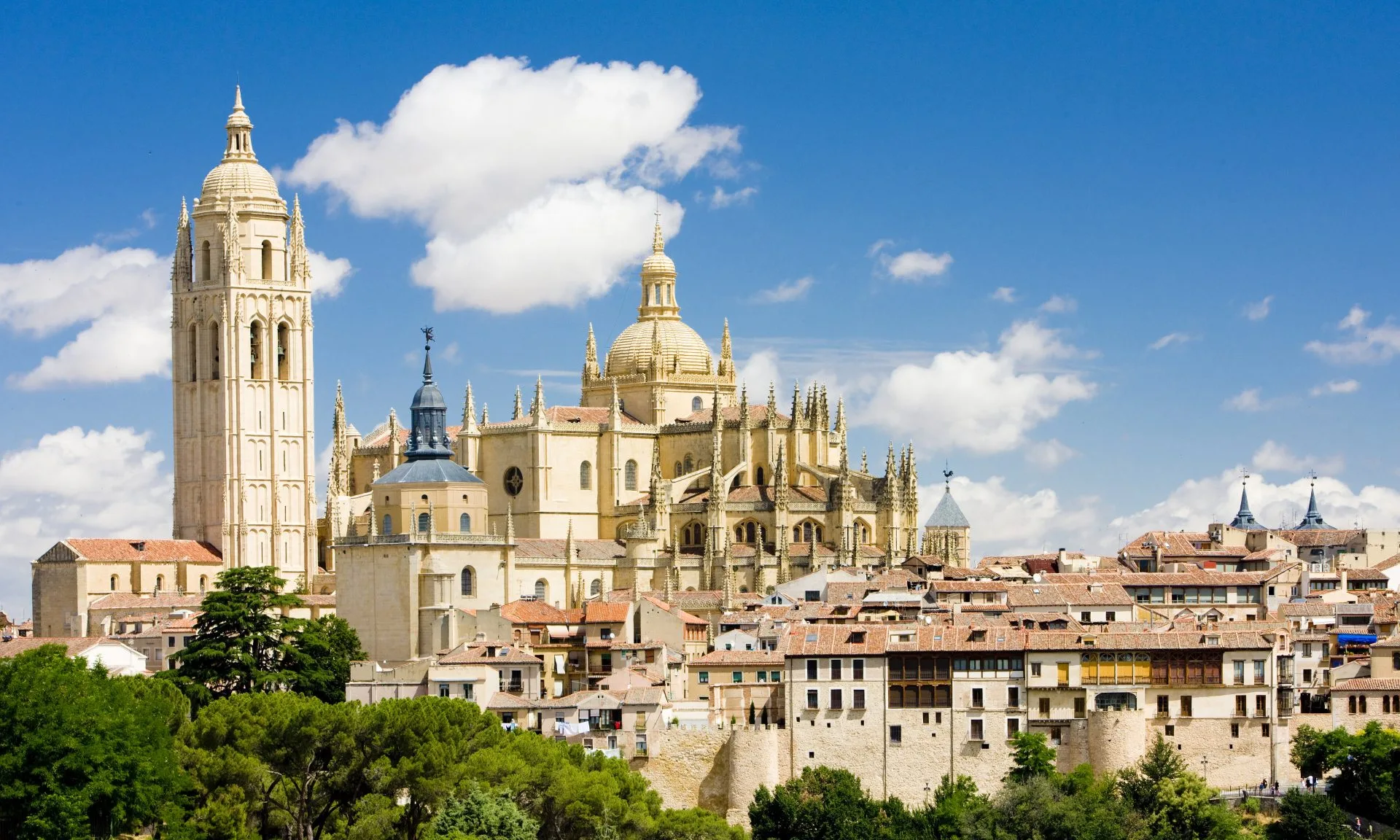
You can still see the cathedrals, monasteries and castles that are of medieval descent across the region.
A varied landscape and cuisine
In addition to this varied history, Castile y León is also known for its natural parks and kilometres of wood and forest – as well as the excellent gastronomy found here, with lamb and the vegetables of particular note. It is said that the people here speak the purest form of Castilian, making the region very popular with people who want to learn Spanish.
The cities here may not be the most obvious location for Brits to move to. The people have a reputation for being more austere and conservative, and the rural areas are sparsely populated. Generally this region suits would-be expats with a good grasp of Spanish language and culture – and those who are looking for peace, tranquillity and the real Spanish idyll.
Cities of note in Castile y León include:
Salamanca
Capital city of the region, here you will also find the old city, a UNESCO World Heritage Site. Salamanca is also a University City, and home to thousands of foreign students, leading to a very interesting and cosmopolitan environment.
Salamanca city is a place where art, culture and knowledge combine. The streets are lined with palaces, señorial buildings, university colleges and towers, with many churches and of course, there is a cathedral. It was inhabited by the Romans and Visigoths, followed by the Moors. The seeds of its university lay in the old cathedral built in the 12th Century which became a centre of learning and excellence and as today, scholars and religious orders came from all over the Iberian Peninsula and beyond.
There are numerous language schools in the area, as well as the university, and the city also attracts young families. It may not be the place for you if you want hot sun all year round but if you are after a lively Spanish life, there are work opportunities for English teachers and part time jobs for students.
Salamanca city is a place where art, culture and knowledge combine. The streets are lined with palaces, señorial buildings, university colleges and towers
Outside the capital, the town of Ciudad Rodrigo has a population of 14,000. It is a smaller version of Salamanca city and stands proudly on the top of a hill overlooking peaceful countryside. La Alberca is a lovely little village which has recently become popular with tourists, though most are just passing through or there for the day. They come to see the many half-timbered houses and the drive from Salamanca is breath-taking.
Valle de las Batuecas National Park lies in unspoilt and unpopulated countryside, with all sorts of different flora and fauna. It is home to deer, mountain goats, golden eagles, black vultures and even the endangered lynx.
Segovia
There are many famous architectural highlights in town of Segovia, towards the southeast of the Castile-León region, such as the famous Roman aqueduct, the Alcázar royal palace, and the Gothic cathedral – the last Gothic cathedral built in Spain. The old city and its aqueduct were declared a UNESCO World Heritage site in 1985; this dates from the last 1st or early 2nd Century and is acknowledged as the most important civil engineering work in Spain. The entire city is thought to date back to the Roman Empire in 75 BC, and it served as an important trading city during the Middle Ages.
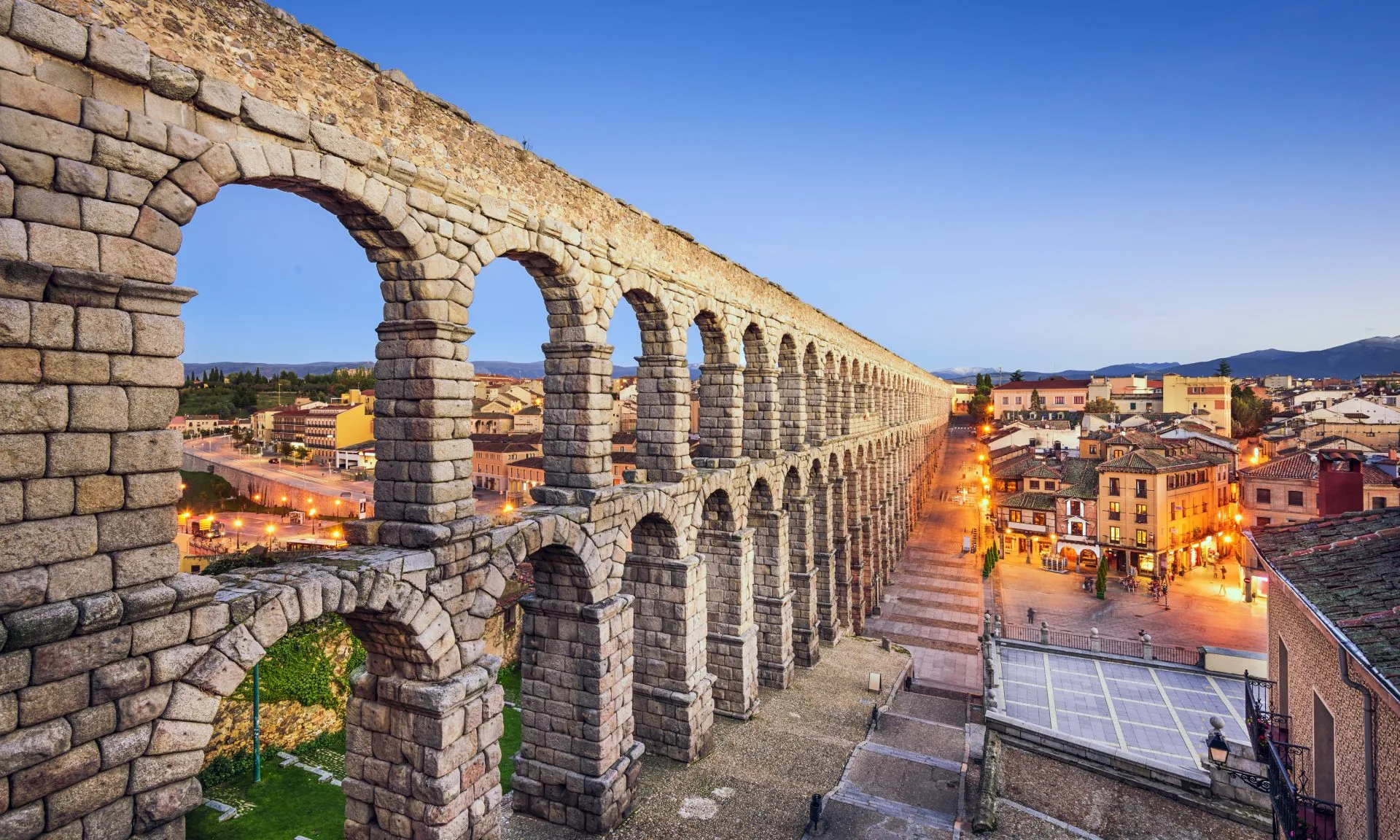
Segovia’s famous aqueduct dates as far back as 1st/2nd Century AD.
It’s a popular tourist attraction, and it’s common for the regular tourists to decide to purchase holiday homes here. There is an ongoing expat community, although it is not a busy as you may expect in some of the larger parts of the country.
Getting here
The main airports in Castile-León connect the region to the rest of mainland Spain and the islands, rather than globally. The closest international airport is Barajas Airport in Madrid, which is around 102 miles from Castile-León. This airport is served by numerous airlines from across the UK, including British Airways, easyJet, Iberia Express, Monarch, Norwegian Air Shuttle and Ryanair.
Main railway lines connect Castile-León to Madrid, whilst the main line from Paris to Lisbon crosses the region – ensuring access to the rest of Spain and further afield.
Smart Currency Exchange is the specialist in exchanging your pounds into euros for property, with a 5-star rating on Trustpilot. Read Smart’s Property Buyer’s Guide to Currency.
Asturias
Influences of the Celts, the Romans and the Moors can still be seen today in the architecture and culture of the region.
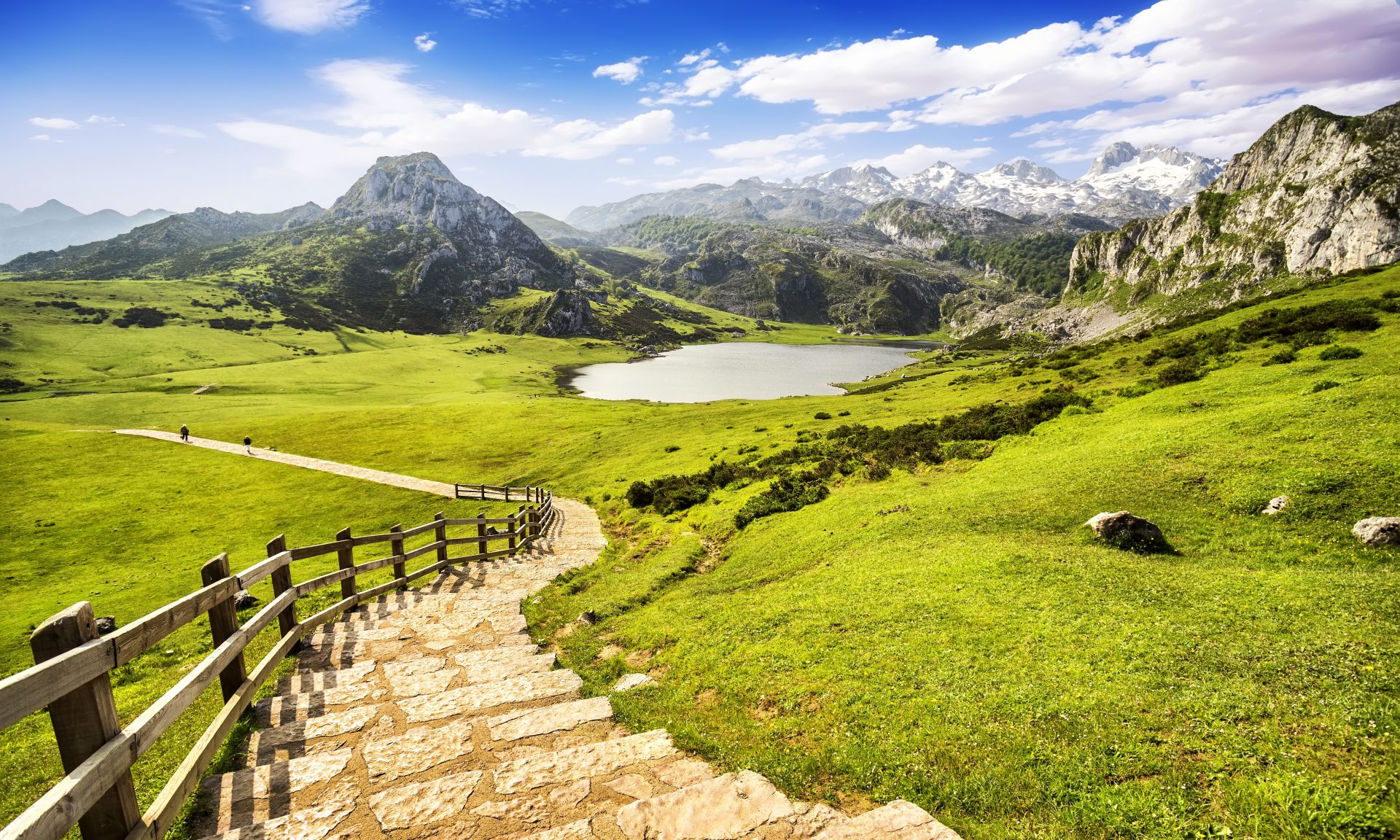
The landscape here ensures a varied climate – difficult to what you may expect from Spain.
The key geographical features of the region are its rocky coastal cliffs that surround the mountainous interior. This contributes to the varied climate you will find there – generally humid summers and cold winters.
Historical influence abounds
The history of the region ensures there is a strong legacy in the architecture you will find here, particularly the ancient churches – and Oviedo, the region’s capital, is home to yet another UNESCO World Heritage Site in this corner of the world. Cities, including Oviedo, tend to be sophisticated but also traditional.
The history of the region ensures there is a strong legacy in the architecture you will find here, particularly the ancient churches
A wonderful social life
Expats moving to this corner of the country will find that the social aspects of Asturias are great. Restaurants serve traditional Asturian cuisine, including Fabada (a dish mixing chorizo, black pudding, sausage and beans (fabes)) and Pote Asturiano (a lamb and potato stew). The climate of Asturias is almost perfect for the production of apple sidra (cider), and as a result of this you will find several sidrerías across this region.
The most important thing you will need to do before moving to Asturias is learn Spanish, and the population speaking English is much smaller here than in other corners of the country.
Getting there
Asturias Airport is the main airport for the region; this generally connects Asturias to the rest of Spain and wider Europe, connecting to the UK through the easyJet London-Stansted service. The east of the region can also be reached easily from Santander Airport in Cantabria.
The national Spanish network also serves the region well, with regular trains connecting Asturias to the rest of the country – and beyond.

The Spain Buying Guide is a free, independent resource to help anyone who is looking to buy property in or move to Spain through each critical stage of their property buying journey.
Set up to help our readers avoid the many complexities and pitfalls of buying property in Spain, the guide takes you through each stage of the property buying process, with practical recommendations from our experts who have been through the process themselves.

